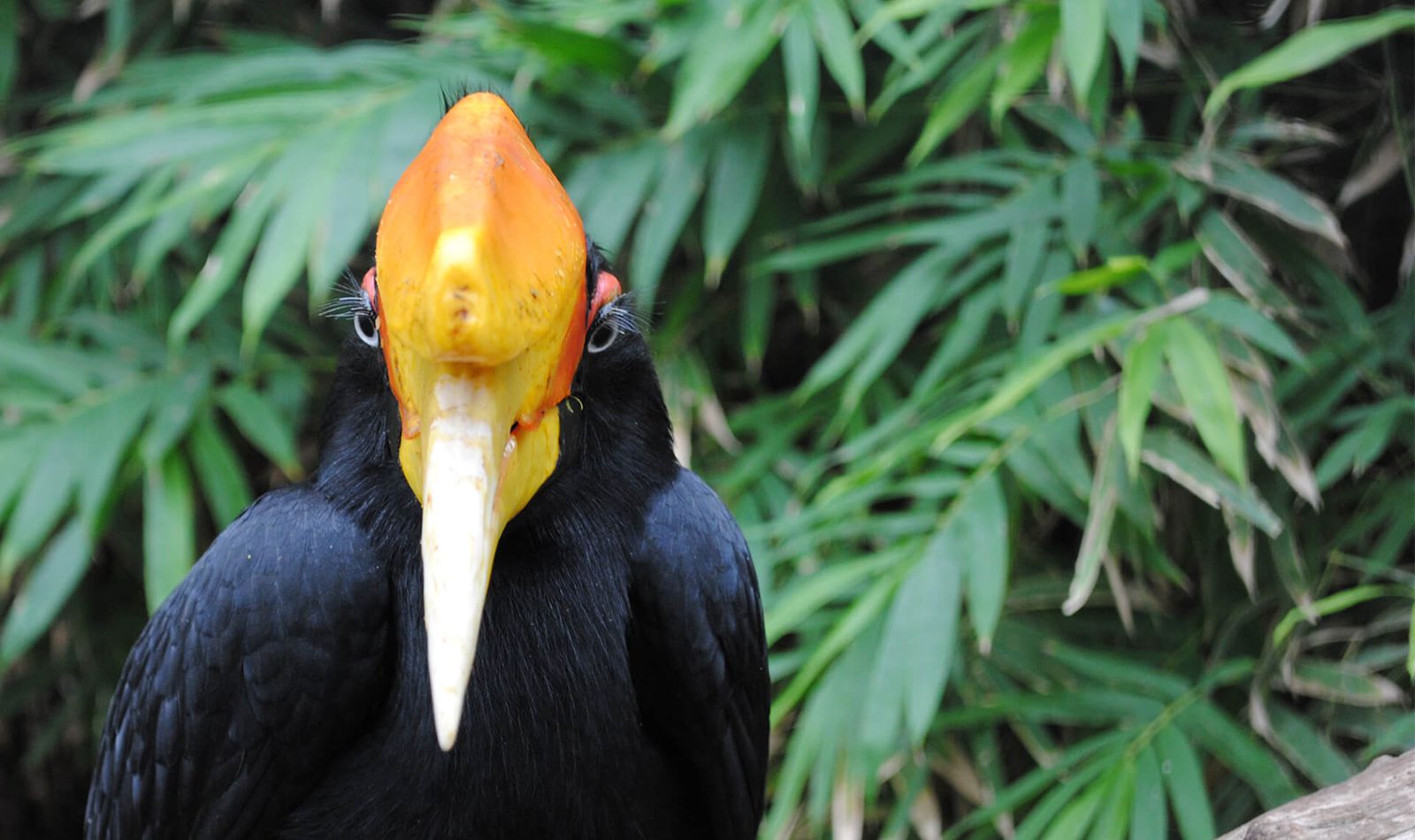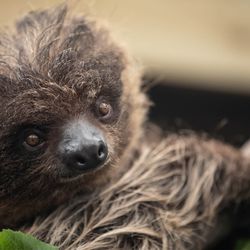« It moves by leaping from branch to branch »
What is the casque for?
An excellent question!
Though often confused with the toucan because of its gigantic beak, the rhinoceros hornbill can be distinguished by one notable feature: its casque. Located above the beak and resembling a horn, the hornbill’s casque varies in size and colour depending on the species. Its function has not yet been fully determined. In species with large casques, such as the rhinoceros hornbill, it is thought to act as a resonating chamber, amplifying the bird’s calls so that they carry further in the forest. It also seems that this appendage may be used to help search for food hidden deep in the dense vegetation and in territorial defence.

Did you know?
Beauval Nature reports… from Borneo!
Our Beauval Nature association is actively involved in a conservation programme that is conducted in collaboration with the Hutan association! The objective of this programme is to save endangered species in Borneo such as orangutans, Asian elephants… and rhinoceros hornbills.
Beauval Nature builds artificial nests for hornbills in Borneo
Hornbills rely on large trees as they build their nests in the hollows of such trees. The conversion of forests to palm groves for palm oil production therefore decreases the number of available nesting sites.
In collaboration with the HUTAN association, the Beauval Nature association supports a project to protect hornbills in Borneo. The project’s objectives are to study the quality of the habitat; to identify areas that are conducive to foraging and reproduction; and to install artificial nests to encourage hornbill reproduction.

Beauval’s rhinoceros hornbills
The pair of rhinoceros hornbills that are located near the entrance to the Bird Tropical Greenhouse love the rain!
As soon as a couple of drops fall from the clouds, they will both start jumping and whirling around in their space, as if celebrating this water from the heavens.


Sponsor our animals
Establish a strong bond with your favourite animal whilst supporting conservation programmes through the Beauval Nature association!
Vulnerable
Learn more about the species
-
OmnivoreDiet
-
37 to 46 daysIncubation
-
1 to 2 eggsClutch size
-
Tropical forestsHabitat
Eye to eye
A bird with a spring in its step!
Fort-Knox-like incubation

Take full advantage of the experience thanks to our mobile application!
Find out more










